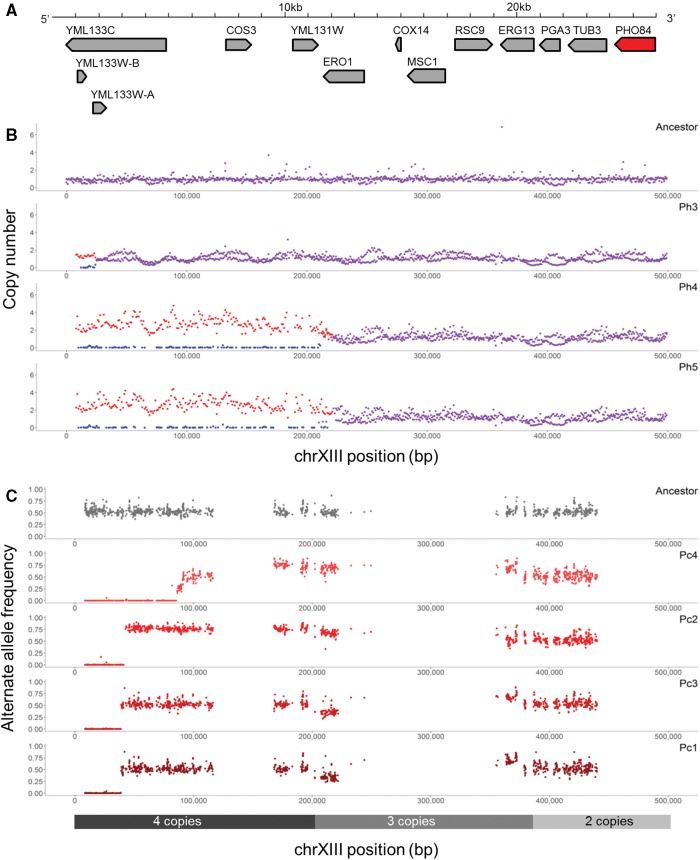Fig. 2.
Repeated loss of heterozygosity at the PHO84 locus in intra- and interspecific hybrids. (A) The 25-kb region extending from the left telomere of chromosome XIII to the high-affinity phosphate transporter gene PHO84. (B) Copy number is plotted across part of chromosome XIII in the hybrid ancestor and three evolved hybrid clones in phosphate limitation (clone indicated in upper right corner). Red shows the S. cerevisiae allele, blue shows the S. uvarum allele, and purple shows where both species exhibit the same copy number. Note: 8 kb of telomere sequence is removed due to repetitive sequence. (C) Alternate allele frequency is plotted for a portion of chromosome XIII in the ancestor and four evolved S. cerevisiae clones in phosphate limitation (clone indicated in upper right corner). All evolved S. cerevisiae clones exhibit a loss of heterozygosity at the telomeric portion of chromosome XIII (loss of S288C, amplification of GRF167), as illustrated by an allele frequency of zero compared with the ancestor. Regions of heterozygosity are interspersed with regions of homozygosity, as one of the parents of the diploid was itself the product of a cross between strains FL100 and S288C, and the other parent was S288C. Regions of heterozygosity are due to FL100 haplotypes. S. cerevisiae copy number for the four evolved clones is shown below; the ancestor is diploid across the chromosome (also see table 2, supplementary fig. S1, Supplementary Material online).

